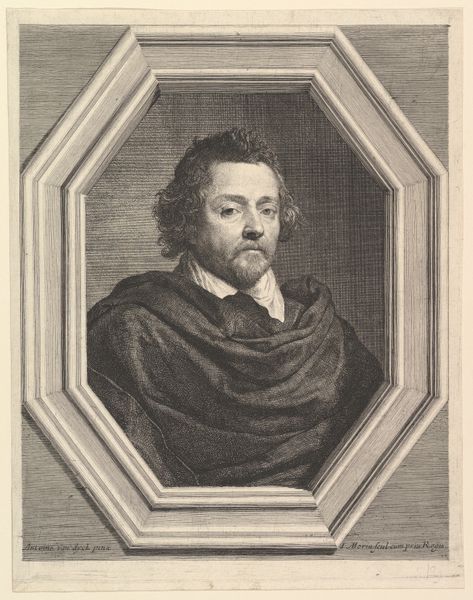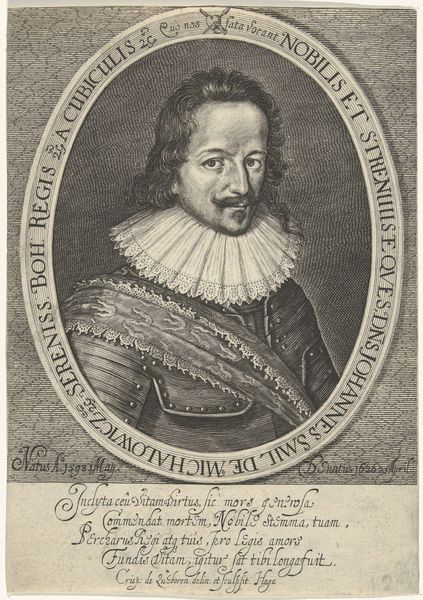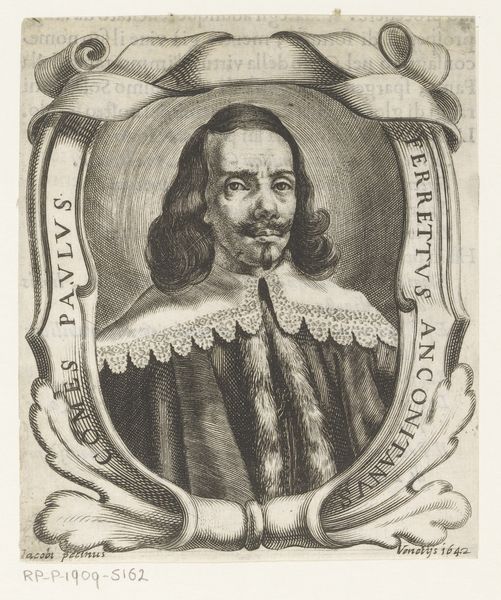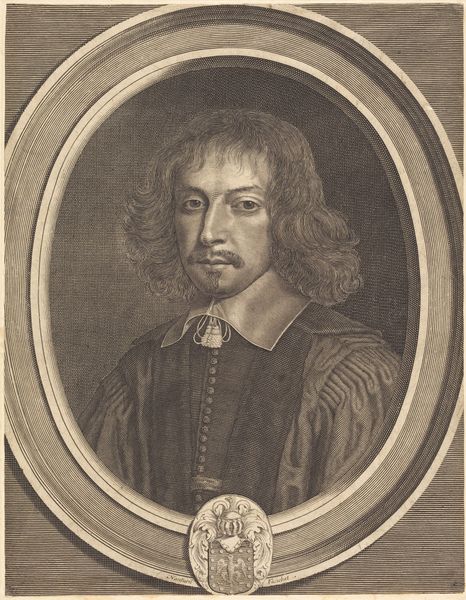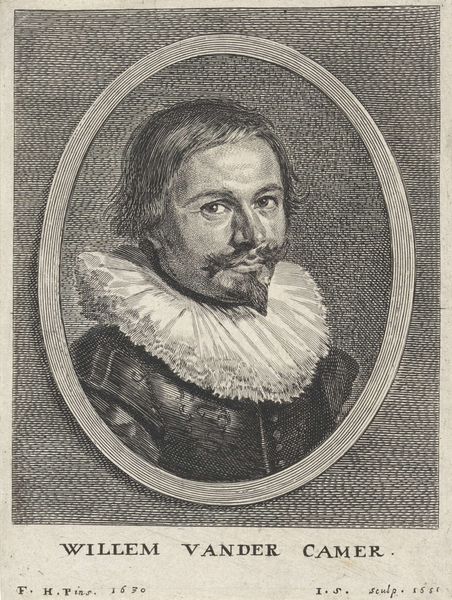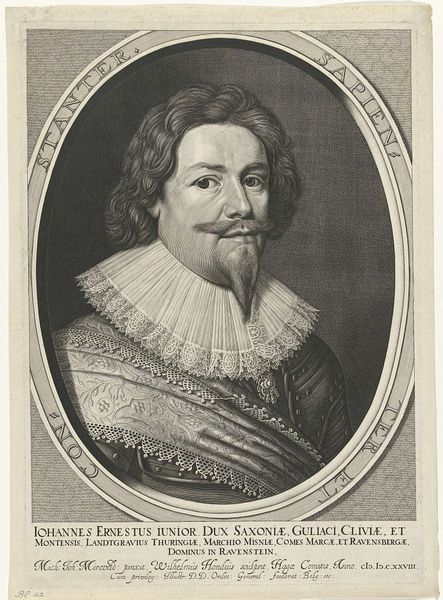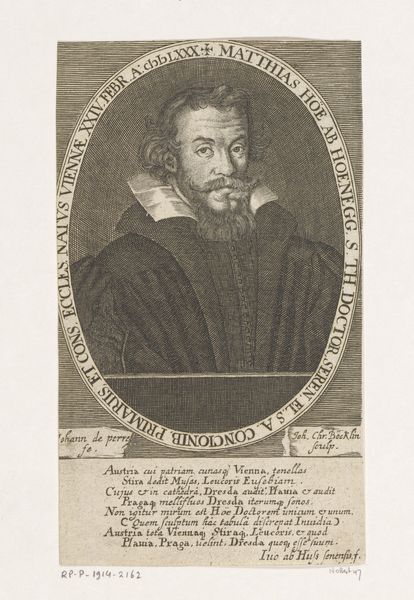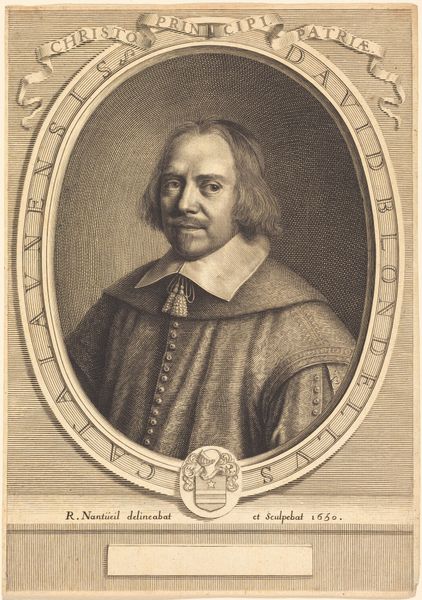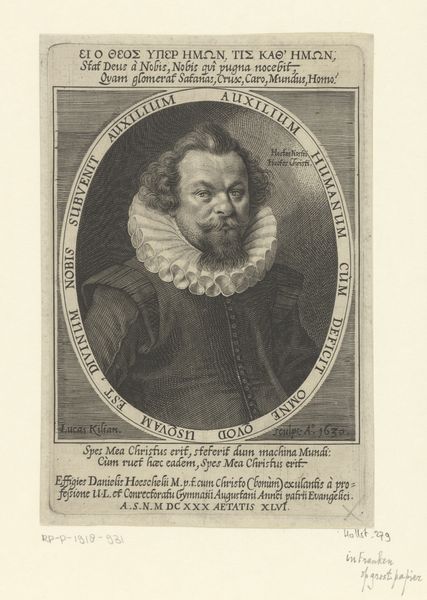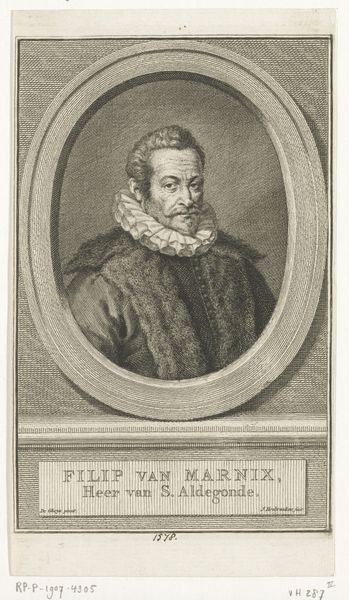
engraving
#
portrait
#
medieval
#
baroque
#
old engraving style
#
pencil drawing
#
portrait drawing
#
engraving
Dimensions: height 181 mm, width 140 mm
Copyright: Rijks Museum: Open Domain
Michel Lasne made this portrait of Pierre de Marcassus using engraving, a printmaking process, sometime between 1590 and 1667. With engraving, the artist would have used a tool called a burin to carve lines directly into a metal plate, which was then inked and printed. Look closely, and you can see how the density of the engraved lines creates areas of light and shadow, giving shape to Marcassus’s face, hair, and elaborate garments. The crispness of the lines also gives a sense of the sitter’s social status; this was a luxury product, intended for circulation among a discerning audience. Engraving was a highly skilled, laborious process, demanding great precision. This elevated it above other, more commercial forms of printmaking. Yet, it was also a reproductive medium, tied to the wider economy of image-making. Considering this context helps us to appreciate how the material and making of the portrait speaks to hierarchies of skill, labor, and class in the 17th century.
Comments
No comments
Be the first to comment and join the conversation on the ultimate creative platform.
